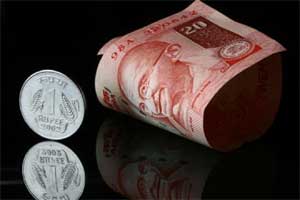The finance minister has regularly been conducting quarterly review meetings with the chairmen and managing directors of public sector banks (PSBs) and financial institutions. The key focus of such meetings is to discuss the performance of PSBs, especially in wake of rising non-performing assets. The finance minister, according to press reports, has assured steps to continually empower the banks so that they can undertake effective banking. He
also mentioned that PSBs have all the powers, full authority and autonomy to take action against defaulters. This is a very essential exercise at the highest level to fire-fight the critical situation of deteriorating asset quality and lend credibility to operations of PSBs.
Indeed, such efforts would encourage PSBs to improve their performance and undertake banking fearlessly.
However, what India requires is long-term planning for healthy growth of the banking sector amidst increasing competition and challenges from within and outside the country.
For that, it would be necessary to identify challenges and then prepare a roadmap for the future. Then, regular monitoring of performance of PSBs against stipulated goalposts would lead to more meaningful evaluation.
PSBs have been the backbone of Indian financial architecture since the nationalisation of the State Bank of India in 1955, followed by more banks in 1969 and 1980. Despite critical global condition and slowdown in the Indian economy, PSBs have been holding on with support from the government and the Reserve Bank of India (RBI). Though the credit offtake has been lower than expected in recent quarters, capital adequacy is appropriate and deposit growth has been following a steady pace.
The future of banking in India is promising and, therefore, the growth of banking industry has to be carefully crafted. India will be the fastest growing economy in the world for the next decade, at least. Further, India will have an increasing need of banking facilities given the fact that the country has a high savings rate of nearly 30% and more. The new bank accounts, numbering about 16 crore under Jan-Dhan, are expected to multiply exponentially with increasing workforce as well as banking penetration. Similarly, growth in MSMEs from the current 5 crore employing 11 crore people is expected to be phenomenal, to cater to the growing demand of working population, given that India is expected to add nearly 120 million workers in the next decade.
The challenges that PSBs will face are also numerous and need to be identified. The small and payments banks as well as microfinance institutions will compete for rural and small businesses. With increasing level of income and global integration, foreign banks will also provide stiff competition to PSBs. With increasing globalisation, many corporations may opt for debt and equity, from domestic and foreign sources, thereby reducing dependence on the banking sector. Therefore, banks may have to increasingly explore the difficult but potent retail banking segment for sustenance and growth. In addition, the nature of international markets would change. Thereby, it would not be sufficient to only know about the customer but increasingly become essential to know the distant markets too where products would be exported.
In the competitive world of finance, the golden mantra is simple and follows the Darwinian concept of survival of the fittest. Thus, it is important to have a strategic plan for PSBs which spans over not only one but probably two generations. In consultation with various stakeholders, the government needs to prepare a vision and mission statement for PSBs, individually and the group. As plans are made, for a generation ahead for children and even grandchildren, a grand vision for PSBs would be necessary, especially when India is planning a transition from an emerging economy to a global one. The plan for PSBs should include scenario analysis, as are the norms in other industry. Once such plans are formulated, then there need to nurture and nourish PSBs to not only withstand onslaught of competition but also emerge victorious like an Olympian gold medallist. On their part, PSBs, so as to successfully face stiff competition, need to identify niche areas, geographically as well as sectorally to specialise.
In this context, probably PSBs need to focus on technology and manpower. On technology, PSBs have been making efforts, though private sector banks continue to provide lead. In contrast, in many PSBs, manpower planning has been a causality in the last few decades. Consequently, middle-level management is missing and soon a crop of young generation of fresh recruits, inadequately experienced, would have to adorn the mantle of senior management shouldering higher responsibilities to help improve and enhance existing levels of efficiency, and prepare for increased business due to rapid globalising of India.
Thus, training in technical areas as well as leadership is increasingly becoming essential for banking officials at different levels of operations. Compensation structure needs to be designed in such a manner that PSBs are not only successful in retaining workforce but are also able to enthuse their workers to excel and outperform their competitors—the formula that Henry Ford successfully tested in 1914 in the automobile industry.
India is changing and so is the polar position. With increasing emphasis on ‘Make in India’ and recognition of India as a global power, PSBs should be prepared for supporting a big market growing organically. There could be a sudden inorganic growth in the market, too. Illustratively, like the euro area, in the next few decades, SAARC monetary area may emerge. Preparing for such eventualities requires strategic thinking, pragmatic approach and calculated risk-taking. PSBs need to prepare adequately and well in advance to provide leadership in those challenging situations. Lastly, PSBs should be prepared to be a torch-bearers in the region given their ownership of an indulgent government, and supervisory support of a responsible central bank.
The author is RBI chair professor of economics, IIM Bangalore.
Views are personal


